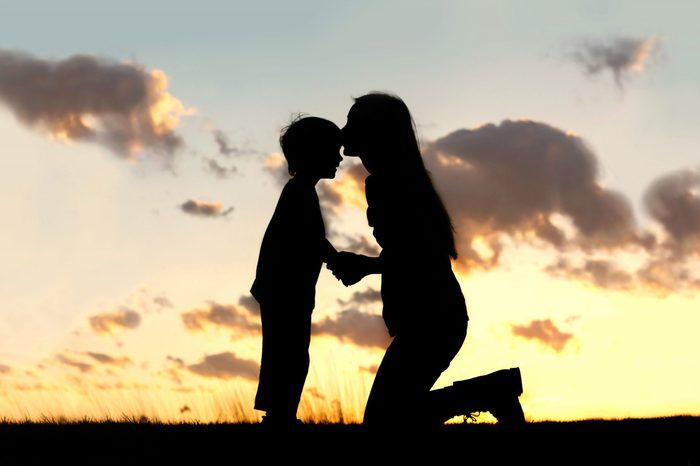
“Older” adoption is more common than you think
Nearly two million children, or 2 percent of kids in the United States, have joined their families through adoption, according to the Department of Health and Human Services. Of the 140,000 children who are adopted each year, 38 percent found families through private domestic adoptions, 25 percent through international adoptions, and 37 percent through the foster-care system. And in what may come as a big surprise to many people, just 62 percent of children were placed with their families within a month of birth. This means that one in three adoptions involves an older child, including some of these famous people who were adopted as older children. That said, it is often harder for older children to get adopted, and some of them wait a very long time before finding their forever families if they ever find them at all. While adopting an older child may pose some unique challenges, it also offers some very special blessings, as these families can attest.
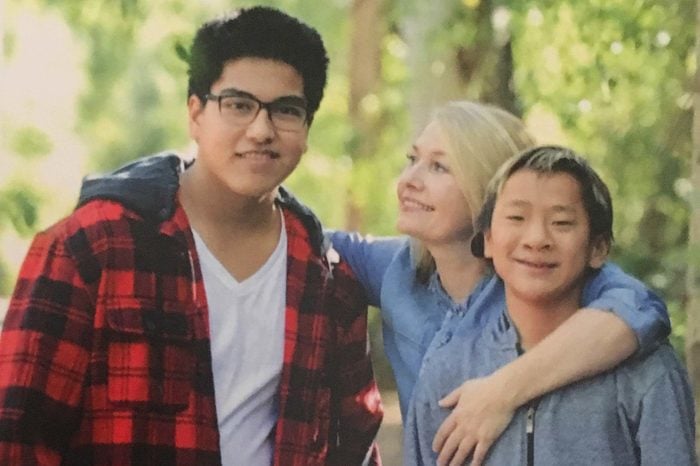
“I adopted an 18-year-old because everyone needs a family”
When Rebecca Masterson, of Phoenix, Arizona, decided she was ready to start her family, she knew two things: She would adopt only one child, and it would be a girl. She was wrong on both counts—and she couldn’t be happier about it.
Rebecca adopted Jax from an orphanage in China when he was 3.5 years old. She’d originally chosen a little girl, but when she saw Jax’s photo on a special needs “waiting child” list, she immediately fell in love. But the feeling wasn’t mutual, at least at first. “Jax screamed his way through China, biting and kicking us all the way home,” she says. “He was absolutely terrified.”
Eventually, with a lot of work and patience, he settled into his new life, and Rebecca thought her family was complete. That is, until life threw her another curveball and she met Johnny, a surly 16-year-old. She worked as a volunteer lawyer for kids who had mandatory school meetings but didn’t have a parent or guardian to accompany them, and that day, he was her client. Johnny, who’d been in the foster care system for 13 years and placed in more than 40 homes, wasn’t having it, swearing at her and telling her he’d never see her again anyhow.
“But at that moment, I caught a glimpse of who Johnny really was—a scared child who had been failed time and time again,” Rebecca says. “He had no home, no family, and no one to rely on other than himself. The only consistency in his life was how often things changed.”
She made him a deal: If he stuck with his meetings, she’d always show up to be there with him. Over the next year, not only did she work as his personal lawyer, but she also took him on family outings, visited him in his group home, and even attended a summer arts program performance he was in.
But that moment of calm would end the second Johnny turned 18 and was out of foster care. “When Johnny told me that his best option for steady meals and shelter when he aged out of foster care at age 18 was prison, it gutted me,” Rebecca says. “Not because he deserved better, which he did, or because he was bright and capable, which he was, but because he was right. As his lawyer, I could help a very little bit, like a Band-Aid helps a gunshot wound. What Johnny needed was a family.”
So he moved in with her and Jax, and on his 18th birthday, she adopted him. It hasn’t been all sunshine and roses since then—adoption isn’t always a smooth process, one of the things parents of adopted children want you know—but it’s all been worth it. “He came to me with three high school credits and didn’t know how to order at a restaurant or buy something at a grocery store,” Rebecca says. “Since that time, he passed his GED, got a job, successfully budgeted money, and learned to drive. Johnny is his little brother’s fiercest advocate, and he has learned to regulate his emotions. Two months ago, he enlisted with the U.S. Army, and I’ve never been prouder than when he swore in.”
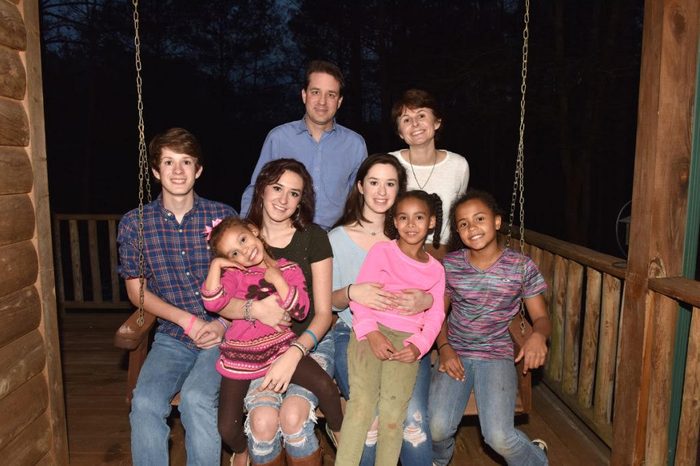
“She was the meanest child I’d ever met”
With three young kids, Kelly and John DeGarmo already had a full house. Yet the couple from Monticello, Georgia, knew they wanted to do more to help children, so they signed up to be foster parents, eventually fostering more than 60 children of all ages. Through the process of fostering, they eventually adopted three girls: Grace, Brailey, and Cassie, who were adopted when they were 1.5, 2.5, and 1 year old, respectively.
Adopting through the foster care system has led to many success stories, but it isn’t for the faint of heart. The couple immediately hit some snags, as each child came with her own unique sets of physical and emotional problems. “Brailey came to us at 18 months old, and she only knew one word: ‘Shut up!'” John says. “She was the meanest child I had ever encountered, and it was truly because of the environment she grew up in. Now, at 9 years old, she is the happiest child I know. It really showed me the power of a good environment.”
Fostering also involves a lot of heartbreak, he adds, since you fall in love with children who are ultimately taken away. The DeGarmos tried to adopt four other kids and were devastated when it didn’t work out, John says. But they are adamant that the benefits and love that come from helping needy children far outweigh the downsides.
“The adoption of three girls into my home has taught me much, and it has filled my home with more laughter, more tears, and more learning experiences than I would ever have imagined,” John says. “We learn each day from each other, and each day is an adventure in some way. As a foster parent, it’s not just about the kids we adopted. Each child that has been placed in our home is considered a member of our family, and some of them continue to come to visit us. Our home is filled with love and laughter.”
John DeGarmo has a TEDx talk about fostering and is the author of The Little Book of Foster Care Wisdom.
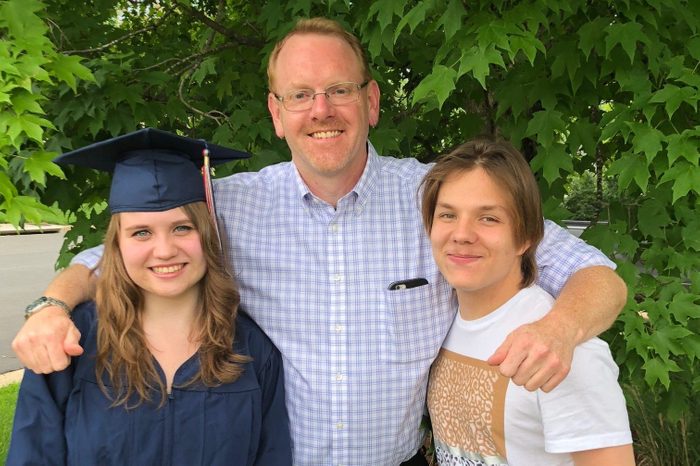
“All they were given to eat each day was a bowl of broth and a piece of bread”
“April 30th, 2006, is officially our Gotcha Day, also known as the day the adoption became final,” explains Ken S. of Centreville, Virginia. “We’d just spent 35 days in Poltava, Ukraine, waiting to adopt Valeria, then 6, and Timothy, then 5, and it’s impossible to express the joy of that moment. Even 13 years later we celebrate it like it’s a holiday, going out to dinner and ordering a stack of pancakes higher than our heads!”
Finding their kids wasn’t an easy process for Ken and his now ex-wife. The children were in a packed Ukrainian orphanage, full of kids who needed homes. After going through countless files, they chose Valeria and Timothy. “We just fell in love with the photos of Val and Tim,” he says. “We kept going back to them and finally said, ‘This is it—this is our family.'”
At first, they were worried that the pair, who’d been rescued from a home where they were neglected and abused, would have a difficult time adjusting to their new life. Indeed, when Ken gave them a box of Teddy Grahams, they devoured the whole thing in seconds, fearing there wouldn’t be more.
“They had crumbs flying out as they tried to breathe, but they were so starving that they wanted to eat all the food as fast as they could before it was taken away,” he says. “All they would get for lunch and dinner in the orphanage was a small bowl of soup with one cube of meat and one slice of bread. It was heartbreaking.”
But the kids adapted to their new lifestyle at lightning speed. By the end of the summer, they were speaking fluent English and in love with American staples like McDonald’s Happy Meals and Disney movies. Now 19 and 18, Valeria and Timothy are thriving young adults who have a loving, close relationship with both of their parents.
How did they get through such a huge transition? Ken says the best thing they did to make their family forever was both the easiest and the hardest: loving them unconditionally and making sure they knew it and never forgot it. “From day one, I would tell them every day that I love them, I’m thankful for them, and they are the best things that ever happened to me,” he says. “I make sure they know that I appreciate their efforts when they try and [that I] love them even more when they fail. And most of all, I want them to know that I will be here for them forever.”
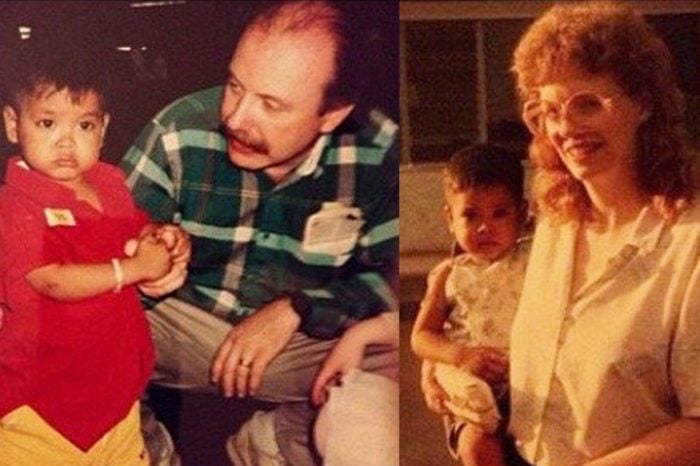
“I’m lucky to be adopted, but they’re also lucky to have me”
Hing Potter, 33, doesn’t remember much about his early childhood. All he knows is that he was found on a street in Phnom Penh, Cambodia, when he was just three months old and taken to an orphanage, where he lived for four years until he was adopted by his American parents, Doug and Elise. The couple eventually adopted three more children—two more from Cambodia and one from India—who became Hing’s siblings. “I had a happy childhood and grew up to be healthy and independent,” he says. “I am forever grateful for this. I love my parents so much for the sacrifices they have made and the endless support they have given me.”
But as he grew and began to notice the differences between his white parents and himself, he started to want more answers about his Khmer heritage. (The idea that adopted children of a different ethnicity than their parents won’t be affected by it is one of the big myths about adoption.) “Growing up, I had always heard of how lucky I am to be adopted—and my parents did an amazing thing—but this idea that I should feel lucky or blessed really only tells one side of the adoption story,” he explains.
Now he’s sharing his side of the story. “My adoption is the story of a Khmer boy growing up loving sports and becoming intrigued with politics, photography, and travel. But my story also comes with emotional baggage and trauma that included a sense of loss, otherness, loneliness; a fear of being left out, last, or invisible; and, at times, damaging self-loathing,” he says. “This was not because I was adopted, but I’ve had to work hard to resolve my issues of being abandoned or given up on, or potentially not being worth it to my birth parents—a process that my adoptive parents have been very supportive of.”
He turned his quest into his life’s work, getting a master’s degree that focused on the experiences of Asian transracial adoptees and how they develop their own individual identities, so he can help others with similar feelings. He plans to visit Cambodia in 2020.
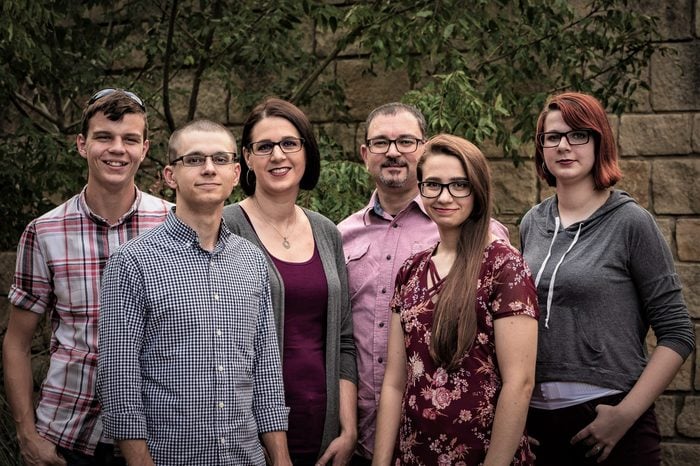
“I adopted a teen just 10 days after we met him”
Joy Miller first met Logen when he called WAY Alliance, a non-profit she runs that helps teens transition out of foster care. “At first glance, he was just a 17-year-old kid who’d run away from his foster home that we were trying to keep from being homeless,” she recalls. But the teenager had already lived through a lifetime’s worth of troubles: He’d been adopted once and then relinquished, did a stint (unfairly, Joy says) in the juvenile justice system, and had endured five out-of-home placements. And now, after years of turmoil, the system was going to just spit him out on the streets on his 18th birthday.
She knew she had to help him. At first, she was simply trying to find him a safe place to stay while he figured out his next move. Unfortunately, all the shelters were full, and she couldn’t find anyone who would take him, until her parents volunteered. Joy, her husband, Jeff, and their four children got to know Logen while he stayed there for a few days.
Then something strange and incredible happened. “As we continued to work on getting Logen’s housing figured out, I soon started getting the feeling—a very strong feeling—that Logen wasn’t supposed to go anywhere,” she says. “That he was actually supposed to stay with us. That he was supposed to be part of our family.”
After discussing it with the rest of the family, Joy and Jeff made their adoption offer to Logen, who was 18 and legally an adult by then. At first, he seemed unsure, but then he enthusiastically accepted, and five months after first meeting, they stood in front of a judge and did an adult adoption—an easy process that only cost them $350, she adds.
Eight months after being adopted, Logen felt secure enough to move into his own apartment and is doing great. He’d weaned himself off all of his psychiatric medications, gotten a job, and enrolled in welding school. The thing that made all of that possible? Knowing he will always have a home and family when he needs them.
“It’s so important for people to realize that teens, even those who are over 18, need a family just as much as an eight-year-old,” Joy says.
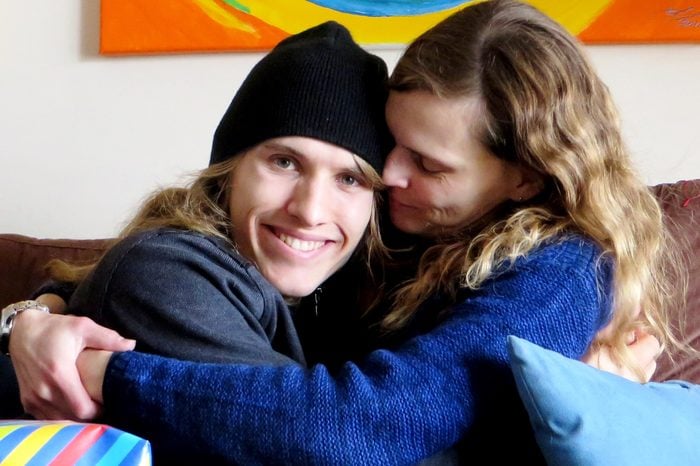
“Our adoption story may have tragedy in it, but it is ultimately one of love and success”
Laurie A. Couture adopted her son, Brycen, in 2005, when he was 11, from the foster care system. He had suffered severe abuse, neglect, loss, and trauma, and had lived in at least two residential facilities and up to 13 different foster and respite homes before finding his forever family with her. Yet, despite all the challenges, the pair immediately bonded, she says.
Due to his early experiences, Brycen was disabled by severe Post Traumatic Stress Disorder with dissociative features and by Reactive Attachment Disorder; he was also on the autism spectrum. To give him the intensive attention, love, and involvement that he desperately needed, Laurie decided to homeschool him. She soon learned that Brycen was a loving, exceptionally bright, and creative child, and through that love and attention, he became eager to learn and to help others.
“Brycen was a passionate musician, songwriter, and artisan, and I built my career and my life around his many projects, events, and live performances,” she says. “He started his first business at age 12 and later sold his handcrafted medieval chain mail. He was brilliant and had insights beyond his years.”
But he was also still haunted by his past traumas. Brycen was stable for many years but began to deteriorate after a series of difficult events, social pressures, and unhealthy contacts, Laurie says. Eventually, overwhelmed by everything, on September 27, 2017, he ended his own life. He was just 23 years old. (Did you know that young men are the highest risk group for suicide? It’s just one of the 14 things therapists want you to know about suicide.)
Even in this tragedy, Laurie finds light. “Our family and community was shattered by his loss, but I know Brycen is no longer haunted by the traumas he suffered,” she says. “My son’s adoption story may have tragedy in it, but I believe, and always will, that it was a successful and happy adoption.”
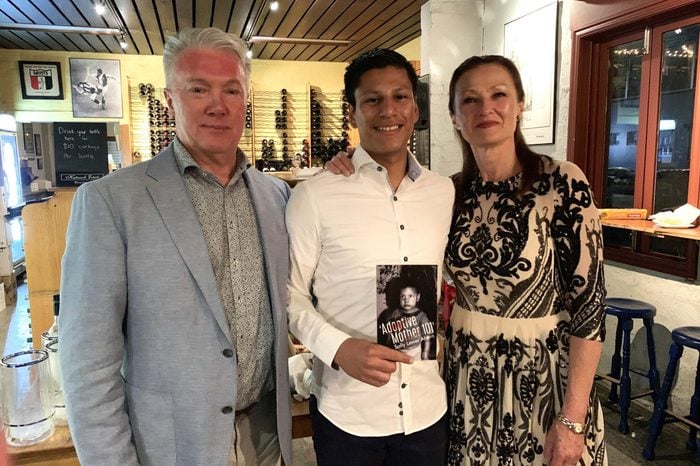
“We were told we were too old to adopt”
When deciding which family gets to adopt a child, there are many rules, and they can vary between countries, adoption agencies, and even from situation to situation, according to Adoption.org. But one thing is fairly consistent: In most places, including the United States, age matters, and often younger couples are preferred—something that Sally Lewer Ahern and her husband Mark Ahern discovered when they tried to adopt in their 40s.
“We were very limited with regard to which countries we could adopt a child from,” she says. “Still, when our adoption agency called and asked if we were interested in adopting a child from Guatemala, my first response was, ‘Where is Guatemala?’ and then, ‘How do you spell that?'”
But the Melbourne, Australia, couple quickly became very excited about adopting Carlos, a boy who’d been surrendered by his birth mother because she had six other children and couldn’t afford to keep him. “It was heartbreaking. His birth mother was earning just $25 (USD) per month to feed her family,” Sally explains. “No mention was ever made of his birth father.”
Even though they’d known about Carlos since he was two days old, due to government regulations, they weren’t allowed to adopt him until he was three. On July 17, 2000, they went to pick him up from the orphanage.
“I still remember that first meeting—it was so surreal,” Sally says. “I had so many emotions. Since he was old enough to know his world was changing, I worried if he would like us or if he would be frightened. And then there he was, and suddenly we were all laughing and crying. It was the best kind of crazy.”
At the time, Carlos only spoke Spanish and his parents spoke English, but the love they had for him bridged the gap. “As with any family, with either biological or adopted children, we have had our hiccups along the way, but they’ve been small things,” Sally says. Today, Carlos is a thriving, successful 22-year-old who is still very close to his parents.
“Quite simply, Carlos is the best thing that has ever happened to us,” she says. “Because of Carlos, we went from being a couple to becoming a family—a multicultural family—and we three couldn’t be happier together.”
Sally has written a book about her adoption experience, Adoptive Mother 101.
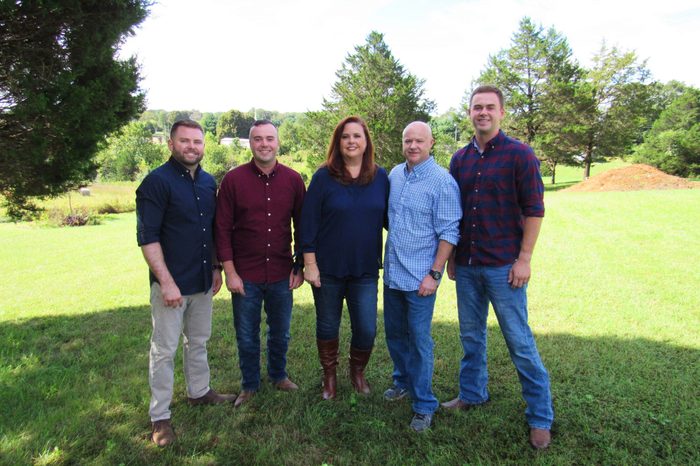
“I’ve been on both sides of adoption stories”
As a family consultant and a parent trainer working in therapeutic foster care, Robin Flint saw a lot of children in horrifying situations. “The children I worked with all had trauma histories filled with emotional, physical, and sexual abuse,” she says. “I saw profound neglect and heard stories that were absolutely soul-crushing.”
But through her work, she was able to connect them—many of them older children—with families who were willing to give unconditional love to these vulnerable children and teens and provide them with a family and a home.
Her interest in helping children find loving, adoptive parents wasn’t just work-related, however. “When I was a teen, I got pregnant. Out of fear, I hid it for nine long months, even going without health care,” Robin says. “After I had the baby, I placed my son with a family in a closed adoption. It was heartbreaking but the best decision at the time.”
Robin thought about her son often, especially in her work, and wondered how he was doing, but because the adoption was closed, she couldn’t get any more information. That is, until he turned 19 and decided to find her. Their reunion filled a hole in her heart, and she “adopted” him back, so to speak. “We met in 2007 and have been family since then,” she says. “We have meshed two sets of families—his adoptive and biological—into one. There have been some bumps in the road, of course, but I wouldn’t change any of it for the world!”
Next, read on to find out how these 8 adoptees found their birth parents through DNA kits.
